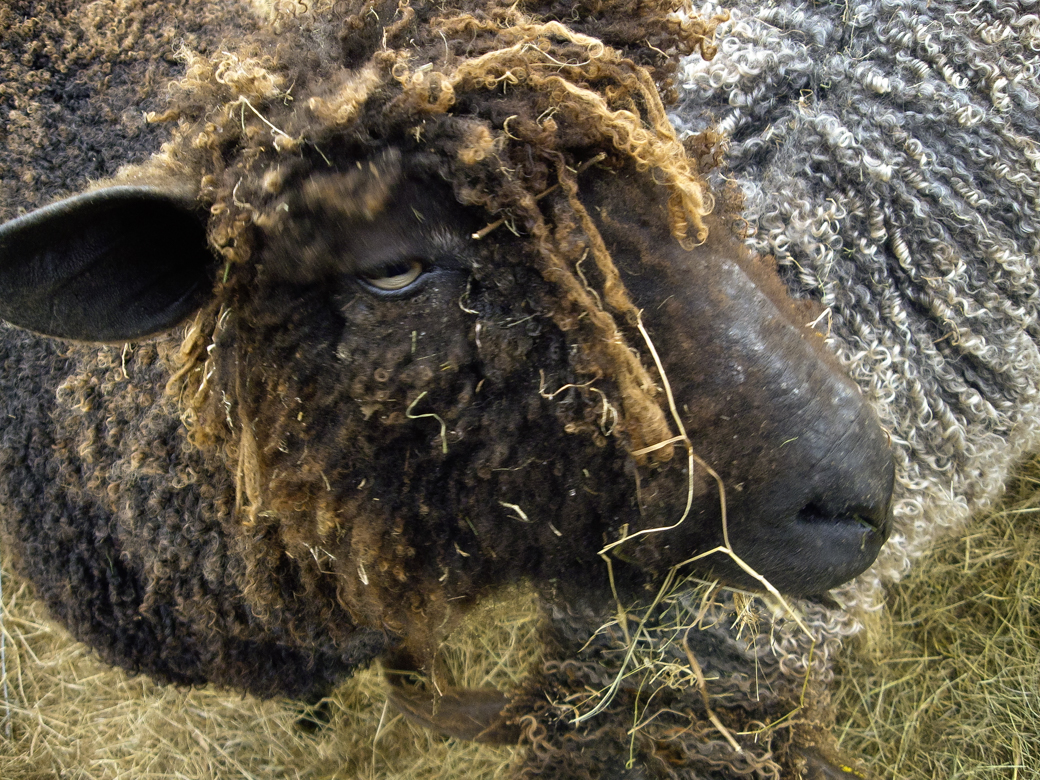This evening we will learn about a flock of coloured Wensleydale sheep which I met in 2007 and their shepherd, Julia Desch. Here is K.G. Ponting reflecting in his amazing tome – The Wool Trade – on the qualities of this particular breed:
Another English long woolled sheep is the Wensleydale which takes its name from the Yorkshire dale of the same name. Its origin is known. About one hundred years ago, Mr. Outhwaite of Appleton crossed ewes of the ancient Teeswater breed with a Leicester ram and so began the breed which is now world famous. The modern Wensleydale produces wool of a very distinctive type, being remarkably lustrous, long and silky in appearance. In Bradford, it is also known as Ripon wool. No additional Liecester blood had been used but careful selective breeding has brought flocks to a high standard of excellence. The numbers are small and the sheep are maintained chiefly for crossing purposes. The Wensleydale is pre-eminently a crossing breed; it is prolific and can stand changes in climate well. The breed’s influence is out of all proportion to its numbers. Its qualities of fertility, wool and lean mutton are invariably passed on to the offspring of the crossing. Most of this crossing is done with the Swaledale or Blackface, and this cross, known as the Masham, is widespread over the lower Pennines.
The animal is hornless and dark or blue faced. It is the most outstanding of all English breeds in the marked individuality of its characteristics, being an extremely handsome sheep. It is found all over the lower land of North Yorkshire and Durham.
-K. G. Ponting’s The Wool Trade past and present, Columbine Press, Manchester & London
